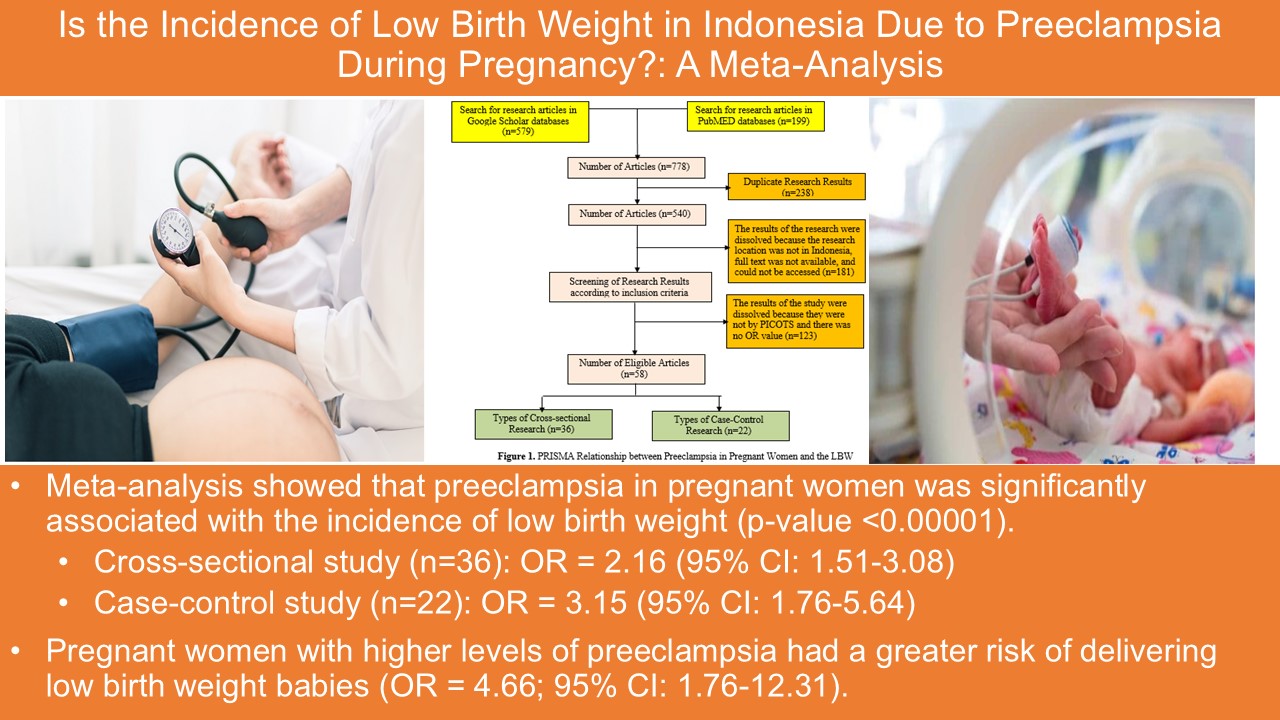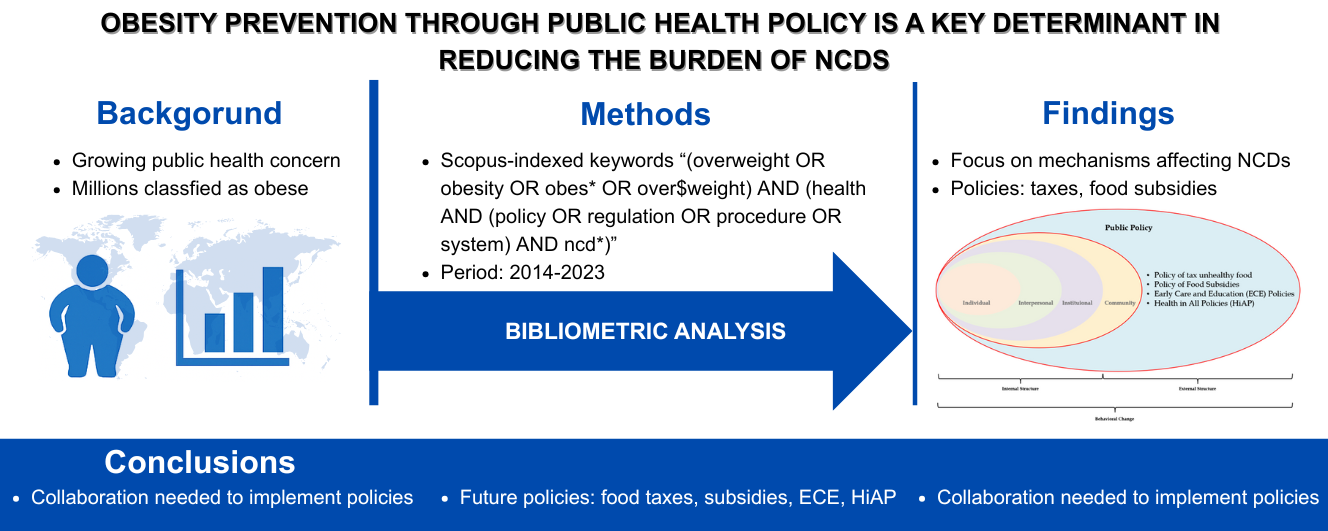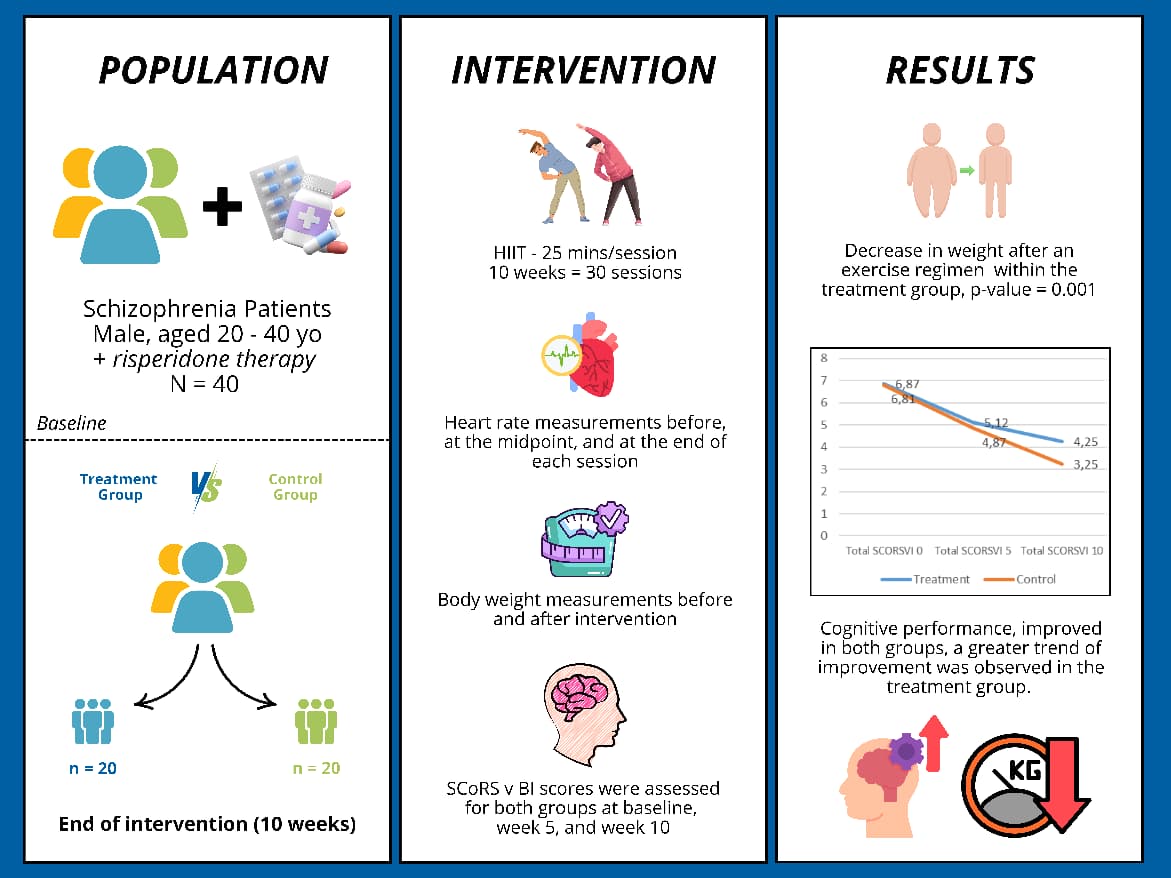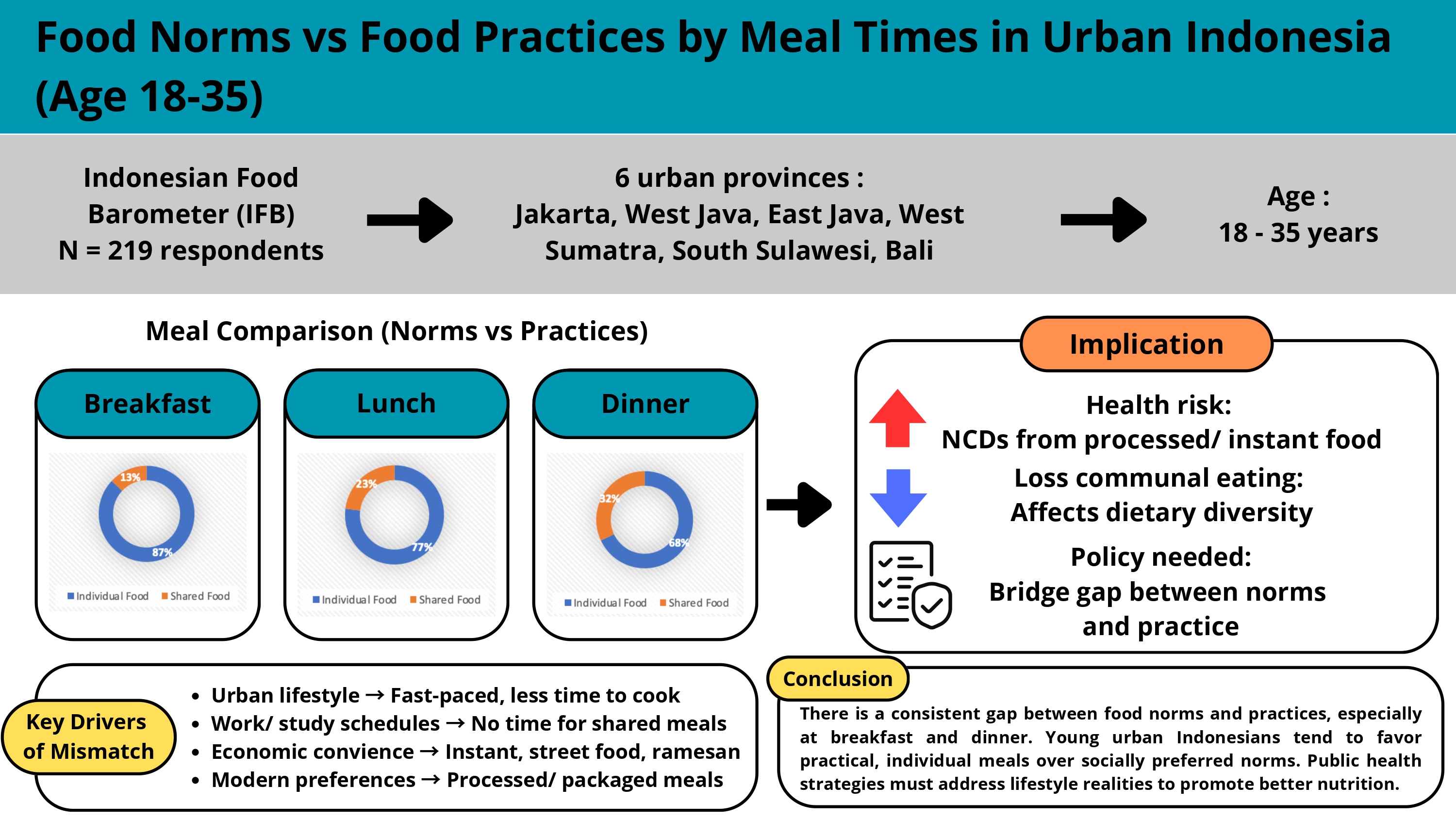FAKTOR RISIKO YANG BERHUBUNGAN DENGAN KEJADIAN BAYI BERAT LAHIR RENDAH DI KECAMATAN SEMAMPIR SURABAYA<br><i>[Risk Factors Associated with Low Birth Weight at Semampir District, Surabaya]</i>
Downloads
Low Birth Weight (LBW) is one of the biggest causes of neonatal mortality in Indonesia. The prevalence of LBW at Semampir District in Surabaya tended to increase from 5.74% in 2013 to 13.65% in 2015. LBW caused by multi-factors including internal factors such as fetal, placental and maternal, and also external factors such as lifestyle and environment. This study aimed to analyze the association between maternal age, gestational age, Mid Upper-Arm Circumference (MUAC), Hemoglobin (Hb) levels, environmental tobacco exposure and LBW at Semampir District, Surabaya. The respondents were mothers at Semampir District who gave birth in 2016. The design of this study was case control. The sample consisted of 22 mothers from the control group and 22 mothers from the case group. The result of descriptive analysis respectively showed that in case group (40.6%) and control group (13.6%) were not pregnant in healthy reproductive age. 59.1% and 18.1% gave birth when the gestational age <37 weeks. 41% and 9.1% were suffered of chronic energy malnutrition (MUAC <23.5). 40.9% and 22.7% were anemic. Moreover, 90,9% and 77,2% were exposed to tobacco smoke (secondhand smoke exposure). Chi square analysis with α=0,05 showed that there were significance associations between gestational age (p=0,006) (OR=6,198; CI 95%=1,61-27,88) and MUAC (p=0,018) (OR=6,623; CI 95%=1,327-51,2) with LBW. It is concluded that mother who gave birth to a premature baby were 6,2 times more likely to have LBW, whereas mother who suffered from chronic energy malnutrition were 6,6 times more likely to have LBW baby.
Abu-Baker, N.N., Haddad, L., & Savage, C. (2010). The influence of secondhand soke exposure on birth outcomes in Jordan. International Journal of Environmental Research and Public Health, 7, 616-634. Diakses dari: < https://www.ncbi.nlm.nih.gov/pmc/articles/PMC2872296/>.
Anggraini, D., Adityawarman, Utomo, B., & Suryawan, A., (2014). Risk Factor of Low Birth Weight (LBW), a Case Control Study. Folia Medica Indonesiana, [e-journal] 50(4), .270-277. Diakses dari: <http://journal.unair.ac.id/download-fullpapers fmi90872afb19full.pdf>.
Aliyu, M.H., Luke, S., Kristensen, S., Alio, A.P., Salihu, H.M. (2012). The factor list of low birth weight: a population based study In Karachi. J Adolesc Health, 46,. 77-82. Diakses dari: .
Aras, R.Y. (2013). Is maternal age risk factor for low birth weight. Archieve of medicine and health science, [e-journal] 1(1), pp.33-37. Diakses dari: <http://www.amhsjournal.org/article.asp?issn=2321-4848;year=2013;volume=1;issue=1;spage=33;epage=37;aulast=Aras>.
Assefa, N., Berhane, Y., Worku, A. (2012). Wealth status, mid upper arm circumference (MUAC) and antenatal care (ANC) are determinants for low birth weight in Kersa, Ethiopia. PLOS ONE, 7(6) e39957. Diakses dari: .
Badan Koordinasi Keluarga Berencana Nasional. (2007). Hindari kehamilan 4 terlalu. [pdf] Direktorat Kelangsungan Hidup Ibu, Bayi dan Anak. Tersedia di: .
Bakacak, M., Avci, F., Ercan, O., Kostu, B., Serin, S., Kiran, G., Bostanci, M.S., & Bakacak, Z. (2014). The effect of maternal hemoglobin concentration on fetal birthweight according to trimesters. The Journal of Maternal Fetal and Neonatal Medicine, [e-journal] 28(17). Diakses dari: < https://www.ncbi.nlm.nih.gov/pubmed/25338012>.
Balitbangkes, (2013). Riset kesehatan dasar (Riskesdas) 2013. Jakarta: Balitbangkes.
Cunningham, F.G., Leveno, K.J., Bloom, S.L., Hauth, J.C., Gilstrap III, L.C., & Wenstrom, K.D. (2005). Williams obstetrics. 22nd edition. New York: McGraw Hill.
Crane, J. M.G., Keough, M., Murphy P., Burrage, L. and Hutchens, D., 2011. Effects of environmental tobacco smoke on perinatal outcomes: a retrospective cohort study. An International Journal of Obstetrics and Gynaecology, [ejournal] 118 (7), 865-871. Diakses dari: <http://doi.org/10.111/j.1471-0528.2011.02941.x>.
Departemen Kesehatan Republik Indonesia. (2006). Ibu sehat bayi sehat. Jakarta: Pusat Penyuluhan Kesehatan Masyarakat.
Departemen Kesehatan Republik Indonesia . (2008). Modul manajemen bayi berat lahir rendah (BBLR) untuk bidan di desa. Jakarta: Direktorat Jenderal Bina Kesehatan Masyarakat.
Dinas Kesehatan Kota Surabaya. (2014). Laporan tahunan dinas kesehatan kota surabaya 2013. Surabaya: Dinas Kesehatan Kota Surabaya.
Dinas Kesehatan Kota Surabaya. (2015). Laporan tahunan dinas kesehatan kota surabaya 2014. Surabaya: Dinas Kesehatan Kota Surabaya.
Dinas Kesehatan Kota Surabaya. (2016). Laporan tahunan dinas kesehatan kota surabaya 2015. Surabaya: Dinas Kesehatan Kota Surabaya.
Dinas Kesehatan Kota Surabaya. (2017). Laporan tahunan dinas kesehatan kota surabaya 2016. Surabaya: Dinas Kesehatan Kota Surabaya.
Gibson, R.S. (2005). Principles of nutritional assessment. 2nd edition. New York: Oxford University Press.
Institute for The Study of Labors. (2007). Mother's education and birth weight (Discussion Paper No. 2640). Bonn, Germany: Arnauld Chevalier and Vincent O'Sullivan.
Johns Hopkins University. (2017). Pregnancy: first triemster, second trimester, third trimester. Diakses dari: <http://www.hopkinsmedicine.org/healthlibrary/conditions/pregnancy_and_childbirth/second_trimester_85,P01234>.
Kamariyah, N dan Musyarofah. (2016). Lingkar lengan atas akan mempengaruhi pertambahan berat badan bayi lahir di BPS ardiningsih Surabaya. Jurnal Ilmiah Kesehatan, 9(1), pp. 98-105. Diakses dari: < http://journal.unusa.ac.id/index.php/jhs/article/view/92>.
Kumar, K.J., Asha, N., Murthy, D.S. and Manjunath, V.G. (2013). Maternal anemia in various trimester and its effect on newborn weight and maturity: An Observational Study. International Journal of Preventive Medicine, 4(2), 193-199. Diakses dari: <https://www.ncbi.nlm.nih.gov/pmc/articles/PMC3604852/>.
Kementerian Kesehatan Republik Indonesia. (2013). Profil kesehatan indonesia. Jakarta: Pusat Data dan Infromasi dan Kesehatan.
Kementrian Kesehatan Republik Indonesia. (2016). Buku kesehatan ibu dan anak. Jakarta: Pusat Data dan Informasi Kesehatan.
Lapau, B. (2015). Metodologi penlitian kebidanan. Jakarta: Pustaka Obor Indonesia.
Lippman, M. (2000). Environmental toxicans. 2nd edition. New York: John Wiley & Sons, Inc.
Manuaba, I. B. (2010). Ilmu kebidanan, penyakit kandungan dan keluarga berencana untuk pendidikan bidan, Jakarta: Penerbit Buku Kedokteran EGC.
Masukume, G., Khashan, A. S., Kenny, L. C., Baker, P. N., Nelson, G., & SCOPE consortium. (2015). Risk factors and birth outcomes of anemia in early pregnancy in a nulliparous cohort. PLOS, 10(4), e0122729. https://doi.org/10.1371/journal.pone.0122729.
Miller, J.E., & Rogers, Y.V. (2009). Mother's education and children's nutritional status: new evidence from Cambodia. Asian Development Reviews. 26(1),pp.131-165. Diakses dari: <http://citeseerx.ist.psu.edu/viewdoc/download?doi=10.1.1.215.534&rep=rep1&type=pdf>.
Ministry of Health Srilanka. (2013). Strategies to promote optimal fetal growth and to minimize the prevalence of low birth weight in Srilanka: Health Sector Response. Thalawathugoda: Ministry of Health Srilanka.
Mutthaya, S. (2009). Maternal nutrition and low birth weight – what is really important? The Indian Journal and Medical Research. 130, 600-608. Diakses dari: <https://www.ncbi.nlm.nih.gov/pubmed/20090114>.
Ohlsson, A., & Shah, P. (2008). Determinant and prevention of low birth weight: a synopsis of the evidence. Alberta Canada: Institute of Health Economics.
Purwanto, A.D., & Wahyuni, C.U. (2016). Hubungan antara umur kehamilan, kehamilan ganda, hipertensi dan anemia dengan kejadian bayi berat lahir rendah (BBLR). Jurnal Berkala Epidemiologi, [e-journal] 4(3), 349-359. Diakses dari: <http://ejournal.unair.ac.id/index.php/JBE/article/viewFile/1627/2555>.
Reza, C., & Puspitasari, N. (2014). Determinan bayi dengan berat lahir rendah. Jurnal Biometrika dan Kependudukan, 3(2), 96-106. Diakses dari: <http://journal.unair.ac.id/download-fullpapers-biometrik3072387889full.pdf>.
Sifakis, S & Pharmakides, G. (2000). Anemia in pregnancy. Annals of The New York Academy of Sciences, 900,.125-136. Diakses dari: < http://onlinelibrary.wiley.com/wol1/doi/10.1111/j.1749-6632.2000.tb06223.x/full>.
Simanjuntak, N.A. (2009). Hubungan anemia pada ibu hamil dengan kejadian bayi berat lahir rendah (BBLR) di badan pengelola rumah sakit umum (BPRSU) Rantauprapat Kabupaten Labuhan Batu Tahun 2008. (Skripsi Universitas Sumatera Utara, Sumatra Utara) Diakses dari: < https://www.researchgate.net/publication/42356153>.
Smitten, J. (2011). Approach to the child with IUGR/SGA. [online] Diakses dari: <http://learn.pediatrics.ubc.ca/body-systems/neonate/approach-to-the-child-with-iugrsga/>.
Sutan, M., Mohtar, M., Mahat, A,N., Tamil, A, M. (2014). Determinant of low birth weight infant: a matched case control study. Open Journal of Preventive Medicine 4,. 91-99. Diakses dari: < http://file.scirp.org/Html/1-1340268_43684.htm>.
Tabrizi, F.M., & Barjasteh, S. (2015). Maternal hemoglobin levels during pregnancy and their association with birth weight of neonates. Iranian Journal of Pediatric and Hematology Ontology 5(4),.211-217. Diakses dari: < https://www.ncbi.nlm.nih.gov/pmc/articles/PMC4779156/>.
Tang, A.M., Chung, M., Dong, K., Terrin, N., Edmonds, A., Assefa, N., Chetty, T., Ramlal, R., Christian, P., West, K., Janjua, N., Wanke, C., Deitchler, M. and Manasseh, Z.M. (2016). Determining a global mid-upper arm circumference
cutoff to assess malnutrition in pregnant women. Washington DC: Food and Nutrition Technical Assistance III Project (FANTA). Diakses dari: < https://www.fantaproject.org/sites/default/files/resources/FANTA-MUAC-cutoffs-pregnant-women-June2016.pdf>.
UNICEF Indonesia. (2012). Ringkasan kajian kesehatan ibu dan anak. Diakses dari: <https://www.unicef.org/indonesia/id/A5_-_B_Ringkasan_Kajian_Kesehatan_REV.pdf>.
Wahabi, H.A., Alzeidan, R.A., Fayed, A.A., Mandil, A., Al-Shaikh, G. and Esmail, S.A. (2013). Effects secondhand smoke on the birth weight of term infants and the demographic profile of Saudi exposed women. BMC Public Health, 13(341),.1-6. Diakses dari: < https://bmcpublichealth.biomedcentral.com/articles/10.1186/1471-2458-13-341>.
WHO. (2000). The Asia-Pacific perspective: redefining obesity and its treatment. Geneva: WHO Pacific Region.
WHO. (2004). Appropriate body mass index for asian populations and its implications for policy and intervention strategies. The Lancet 363 (9403),. 157-163.
WHO. (2012). Global Nutrition Targets 2025: Low birth weight policy briefs (WHO/NMH/NHD/14.5). Geneva: Department of Nutrition for Health and Development.
Woo, R. K. & Albanese, C.T. (2008). Pediatric Surgery, dalam Surgery basic science and clinicial evidence. J.A. Norton, P.S. Barie, R.R. Bollinger, A.E. Chang, S.F.L. Ry, S.J. Mulvihill, H.I. Pass and R.W. Thimpson, editors. New York: Springer.
- MEDIA GIZI INDONESIA Journal is the copyright owner of all materials published on this website.
- The formal legal provisions for access to digital articles of this electronic journal are subject to the terms of the Creative Commons Attribution-NonCommercial-ShareAlike license (CC BY-NC-SA 4.0), which means that MEDIA GIZI INDONESIA Journal and readers reserve the right to save, transmit media / format, manage in database, maintain, and publish articles as long as it continues to include the name of the Author.
- Printed and published print and electronic manuscripts are open access for educational, research and library purposes. In addition to these objectives, the editorial board shall not be liable for violations of copyright law.


2.png)





















